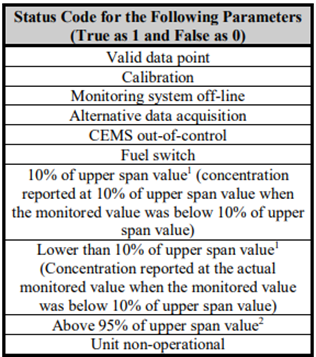South Coast Air Quality Management District (SCAQMD) has amended CEMS Rule 218 Continuous Emissions Monitoring and adopted new Rule 218.2 CEMS: General Provisions and Rule 218.3 CEMS: Performance Specifications.
The amended Rule 218 and the new Rules 218.2 and 218.3 provide specifications for both former RECLAIM CEMS that are previously certified according to the RECLAIM program, as well as non-RECLAIM CEMS that are previously certified according to Rules 218 and 218.1.
On July 28, 2021, at 3 pm ET, VIM hosted their initial Overview of the SCAQMD New CEMS Rules 218.2 and 218.3 webinar.
UPDATE: On March 30, 2022 at 2 pm ET, VIM will be hosting another session of the Overview of the SCAQMD New CEMS Rules 218.2 and 218.3 webinar. The webinar covered the significant changes in CEMS requirements and their potential impact on your facility. We provided an overview of those changes and recommendations on how to best implement them.
To request a recording for any previously recorded webinar, please visit our PREVIOUS WEBINAR page.
Here are some of the major changes from Rules 218 to 218.2
1. Changes to the CEMS Failure Provisions
Rule 218.2 will allow an additional 96 hours if the emission source is not operating and will no longer require an interim variance for the additional 96 hours.
2. Changes in the Reporting Requirements
RATA report submission must be submitted within 60 days after completion of the test. This requirement is consistent with Rule 2012.
3. Changes in the Provisional Data Validation
Upon completion of a successful calibration error test and prior to the approval of final CEMS certification or recertification, all emissions data shall be considered valid quality-assured data beginning at the hour of the passed calibration error test. The calibration error test must be passed prior to any of the certification tests, but no more than 14 days prior to all of the required certification tests. If the certification tests are not approved the data shall be retroactively considered invalid until the hour of the next completion of the certification tests.
4. Allowance for CEMS Shut Downs
Rule 218.2 conditionally allows a CEMS shutdown if an emission unit is down for a minimum of 168 consecutive hours. There are also options to demonstrate a unit is not operating. After zero emissions have been recorded for a minimum of 4 hours after a unit shutdown period and proper notification and reporting has been performed. You must resume CEMS operation for a minimum of 4 hours prior to the unit resuming operations and a calibration error test must be passed before any emissions are detected.
Here are some of the major changes from Rules 218.1 to 218.3
1. Changes to Span Range Requirements
Approving a span range if both requirements cannot be concurrently satisfied is included in Rule 218.3, as well as approving a span range with the upper span value at up to 10 ppm for a unit with emission limit less than 5 ppm. Exempting a top span range of a multiple span range analyzer is also included in Rule 218.3.
2. Changes to Data Acquisition and Handling System Requirements
Recording all status codes for emissions data is specified in Table 2 of Rule 218.3.

3. Changes to RATA Requirements and de minimis Standards
If the number of tests exceeds nine sets, data may be discarded if it is identified as an outlier according the SCAQMD Technical Guidance Document R-004, or for valid reasons which must be substantiated.
The relative accuracy shall be calculated according to Equation 4 expressed as a percentage.
Alternatively, a de minimis value shall be determined using Equation 5, 6 and 7 in Table 3 for pollutant/diluent gas, stack flow and mass emissions.
RATA de minimis standards are reduced from 1.0 ppm to 0.5 ppm for NOx and 1.0% for CO2 (only for O2 previously) and provided a standard for units with CO emission limit < 2.0 ppm.
Revised previous language that stated, “once every 12 months, no later than the end of the calendar quarter in which the date of the original certification test was performed”. Rule 218.3 now states “within 12 months of the end of the month the previous relative accuracy test was performed”.
4. New Quality Assurance Checks
There are some restructured rule languages related to response check, cyclonic flow check, and linearity error, but no change to the requirements. A NOx converter efficiency check and a sample bias check are included as additional required checks as part of Rule 218.3.
Timeline
For CEMS certified to comply with Rules 218 and 218.1, the CEMS shall meet the requirements of Rules 218.2 and 218.3 no later than:
- The date an application is submitted between January 1, 2022 and January 1, 2025, for any CEMS certification or recertification.
- January 1, 2025, for any CEMS that was certified prior to January 1, 2022, but without an application submitted between January 1, 2022, and January 1, 2025, for recertification.
- The implementation date of a source-specific rule for which the CEMS shall be certified or recertified.
Closing
VIM Technologies stands ready to help affected sources navigate the new SCAQMD CEMS Rules requirements. VIM’s state-of-the-art DAS is fully equipped to comply with the new monitoring, recordkeeping requirements. In addition, VIM’s COMPAS group has over 125 years of combined CEMS and regulatory experience, including specific SCAQMD expertise, that can help with your Monitoring Plan, QA/QC Plan, Reporting & Regulatory Support, CEMS Program Audits, Regulatory Training, and DAHS Tune-ups.
If the newly adapted (March 5, 2021) SCAQMD CEMS Rules 218.2 and 218.3 impact your facility and you want to learn more, CONTACT US today at sales@vimtechnologies.com to schedule a complimentary consultation.




